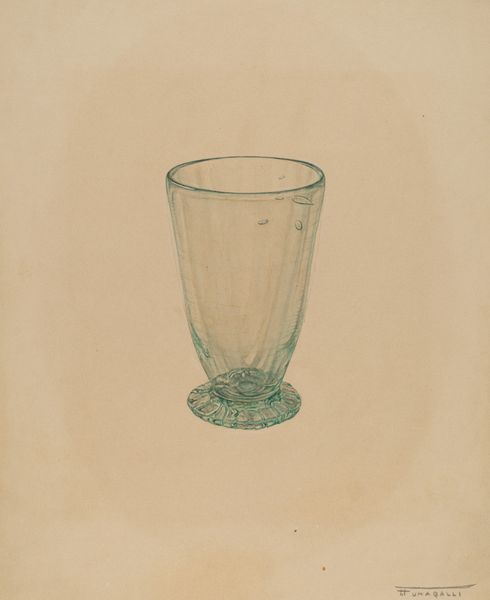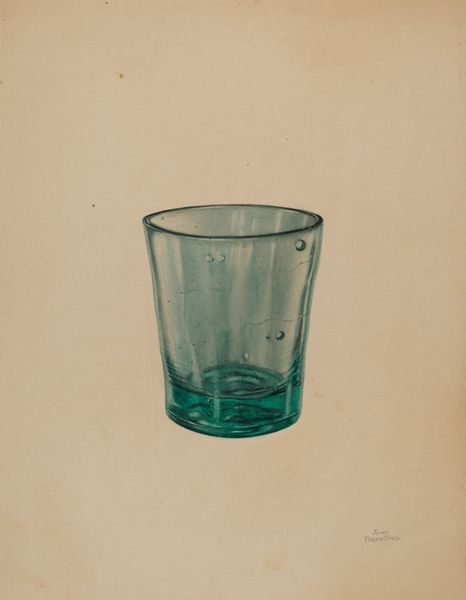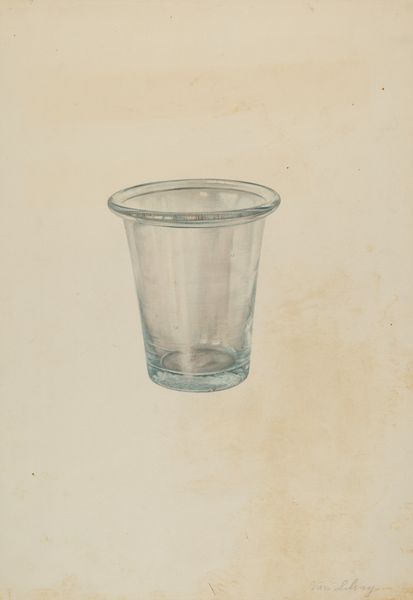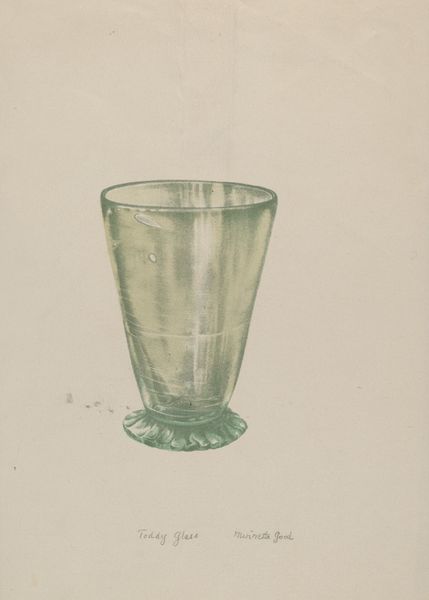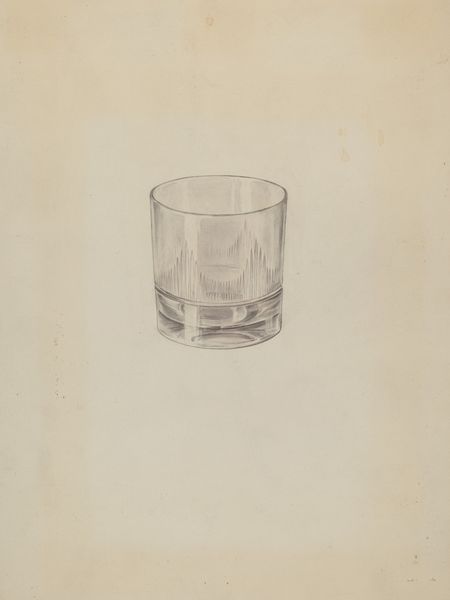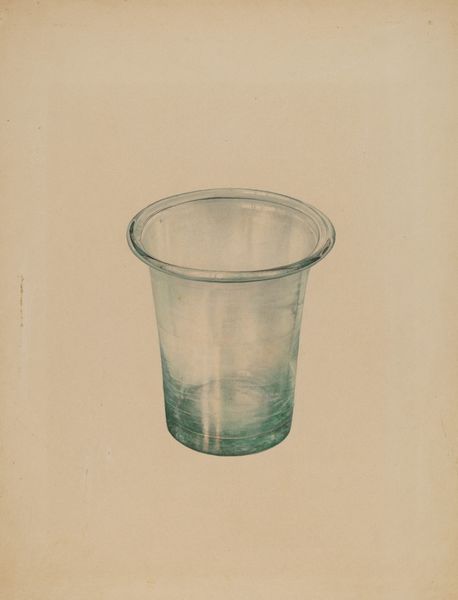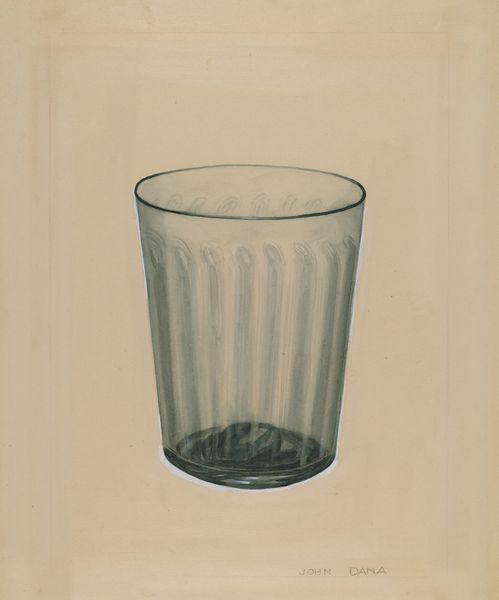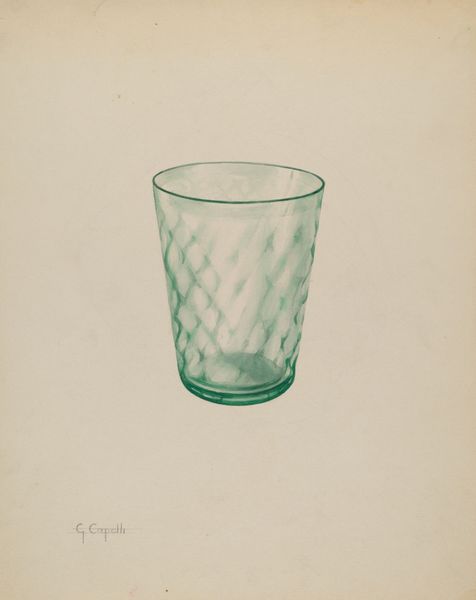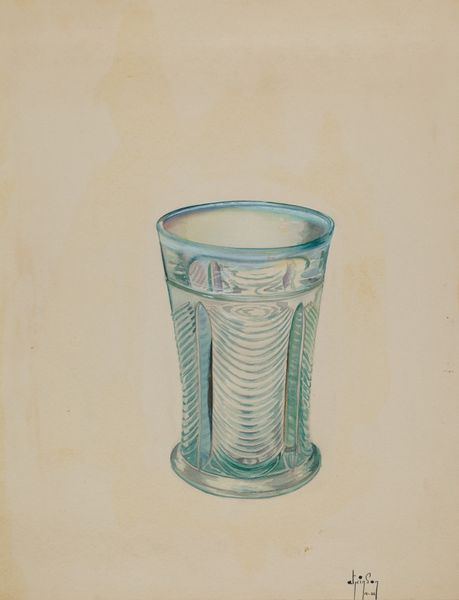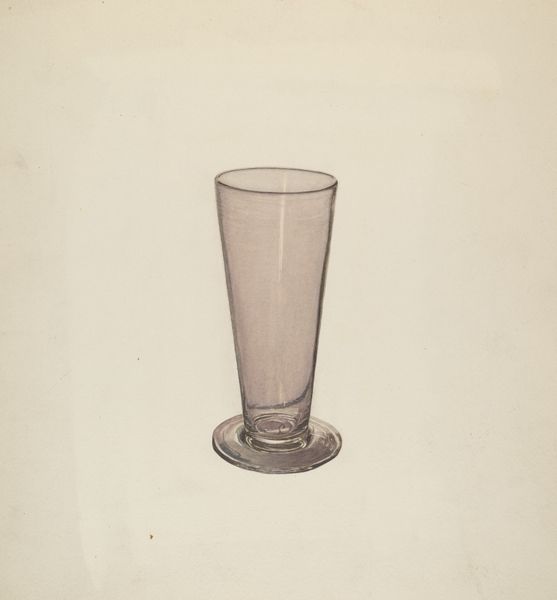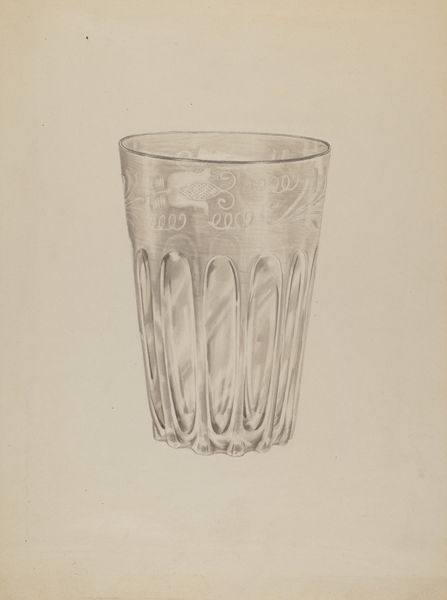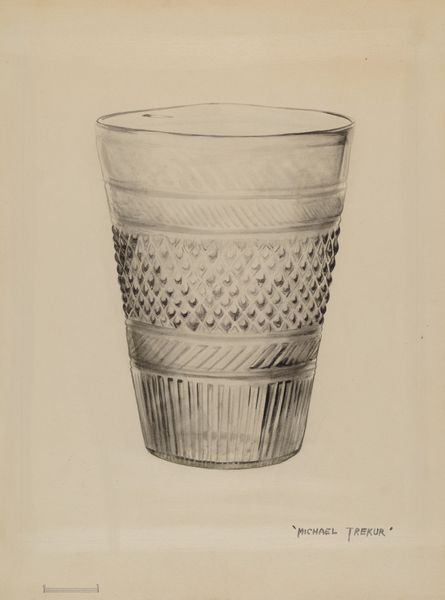
drawing, watercolor
#
drawing
#
watercolor
#
watercolor
#
realism
Dimensions: overall: 30.5 x 22.9 cm (12 x 9 in.)
Copyright: National Gallery of Art: CC0 1.0
Editor: This is "Tumbler" by Charles Garjian, a watercolor and drawing created between 1935 and 1942. It’s a simple, yet beautifully rendered depiction of a drinking glass. I'm curious, what draws your attention in this piece? Curator: I’m immediately drawn to the glass itself – not just its form, but its materiality. Consider the means of its production during that era. Mass-produced glassware like this suggests a rising consumer culture, yet rendered in watercolor, a traditional 'art' medium. How does this tension between the mundane object and the artistic process shape our understanding of value? Editor: That's an interesting point, I hadn’t thought about the mass production aspect. I was just seeing it as a still life. Does the fact that it's just a simple glass change how we think about art during that time period? Curator: Absolutely. It challenges traditional boundaries between "high" and "low" art. By choosing such an ordinary object, Garjian implicitly asks us to reconsider what is worthy of artistic representation. Think about the labour involved – both in the manufacture of the glass itself and in the meticulous application of the watercolor. Who would have been using these glasses, what would they have been drinking, and how does the social context inform this still life? Editor: So it's about more than just the glass as an object; it is about what the object means. What can the material tell us about the artist or the world in which the object exists? Curator: Exactly. It asks us to consider the everyday lives, labor practices, and consumption habits of the time. Looking closer, note the delicate washes of color, the imperfect shape of the glass – suggesting a handmade quality even within a mass-produced item. The drawing also serves as commentary, placing consumption habits alongside the skilled craft that made the very mass production it symbolizes. Editor: I’ve never thought of it that way, seeing art as material evidence. This was illuminating. Thank you! Curator: A pleasure! It highlights how even the most commonplace objects can be rich sources for understanding history, labour, and culture through their material composition.
Comments
No comments
Be the first to comment and join the conversation on the ultimate creative platform.
